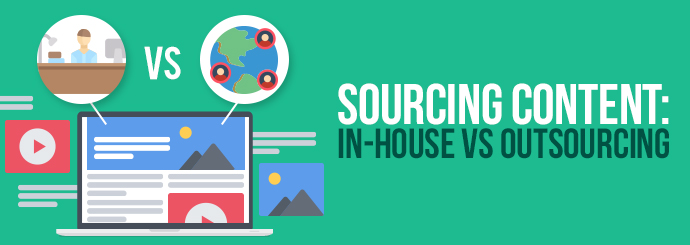It’s long been said that “content is king” in the modern world of online marketing. It’s no secret – Bill Gates famously made that statement way back in 1996.
Since then, it’s become a facepalm-inducing catchphrase for high-ranking bigwigs the world over, right up there with other classic business BS like “low-hanging fruit”, “moving the needle” and “peeling the onion”.
However, unlike the needle-moving, onion-peeling fruit-grabbers of the world, the “content is king” mantra is actually backed by some pretty solid substance.
Quality content that’s both informative and engaging is a winner on all levels: increasing leads, enhancing brand awareness and strengthening customer relationships, ultimately boosting revenue as a result.
That being said, if content is king, then quality writers are akin to royal advisors, entrusted with providing the king with a healthy supply of quality insight, accurate information and razor-sharp wit.
However, quality writers are hard to find – especially ones that are more gooder!
As such, companies often take one of two routes: hiring in-house writers or drafting in external ringers through outsourcing. Both offer their own pros and cons, but which is better?

Differences Between In-House and Outsourcing
While both options ultimately offer the same end-result, the fundamental difference between the two is as follows.
Outsourcing involves hiring a third-party that’s independent of the business to provide content for your company. Meanwhile, in-house production (aka insourcing) involves a dedicated team or specified individuals on staff who are assigned to the task of writing content.
Depending on your company’s approach to content marketing, you may be more familiar with one than the other; however, it’s well worth getting acquainted with both. You never know when you may need to flip the script and rely on the road less travelled.
Benefits of In-House Content
Perhaps the biggest benefit of having an on-site team of content staff is their loyalty and connection to the company. An employed team of contributors that are a genuine part of the brand will likely care far more about the company than a team of non-partisan outsiders.
This affinity for the brand often results in a relationship that’s inimitable in an agency setting, leading the workers to be more motivated to positively contribute as a result. This contribution can also be incentivised further by the possibility of rewards, bonuses or even potential promotion.
Meanwhile, a team of on-site staff will also have an in-depth knowledge of your company goals, values and services, effectively streamlining the whole content creating process – from briefing to proofing – while also providing a better level of content contextualisation.
Additionally, a team of on-site workers will answer to one boss and be both governable and supervised, undistracted by other clients’ demands and deadlines. If you need some content done by a certain time, no other tasks will take precedent over yours.
That being said, hiring staff that are inexperienced or underqualified in the pursuit of saving money can be a fruitless labour that does more damage than good. If you are going to invest in an in-house team, don’t cut corners and hire the best candidate, not the cheapest.
Benefits of Outsourcing Content
While in-house content can be great for familiarity, outsourcing can be the perfect way to provide a fresh perspective from someone outside of the office bubble. This can often result in new and exciting ideas, a novel approach and a fresh tone of voice that is both engaging and notably different from an in-house team.
Meanwhile, outsourcing also provides you with a team of widely experienced professionals that don’t need any training, coaching or development. From a budgetary POV, this can be extremely useful; not only does it give you access to an entire team of on-demand professionals but it also allows you to fluctuate the workload depending on budget constraints.
Speaking of budget, outsourcing can also be a great option for those companies working to tighter purse strings, that may not have the financial resources to hire full-time content staff. Meanwhile, some businesses may not require such a high volume of content to necessitate a dedicated staff member or team, making outsourcing a cost-effective alternative.
However, while it can be more financially beneficial for businesses that don’t require a high-frequency of work, the phrase “if you pay peanuts, you get monkeys” is also very applicable here. While it’s always important not to overpay, content writing is very much a business where you get what you pay for and this is one area you won’t want to penny-pinch.
Best of Both Worlds
Even if you do opt for the in-house approach, you may find yourself in a situation where additional workload, unforeseen tasks and looming deadlines can see you snowed under in no time. Should this be the case, outsourcing can be a great safety net to have.
A blended approach can be extremely useful, offering the best of both worlds. As such, it may be worth having a trustworthy source in mind for third-party content, should busy periods warrant an extra pair of hands.
What’s more, a cocktail of in-house/outsourced content can be a truly symbiotic relationship that serves to boost both methods. External content can motivate in-house staff and vice versa, creating a healthy competition of sorts.
After all, as they say, you’re only as good as your competition and it’s a lot easier to run fast when you’re being chased. Creating an environment where you’re not restricted to one option can be the perfect sweet spot for a thriving creative environment.
For more information on content sourcing or content services from Designer Websites, why not drop us a line today? Call now on 01446 339050 or get in touch online using the button below.
Get in Touch